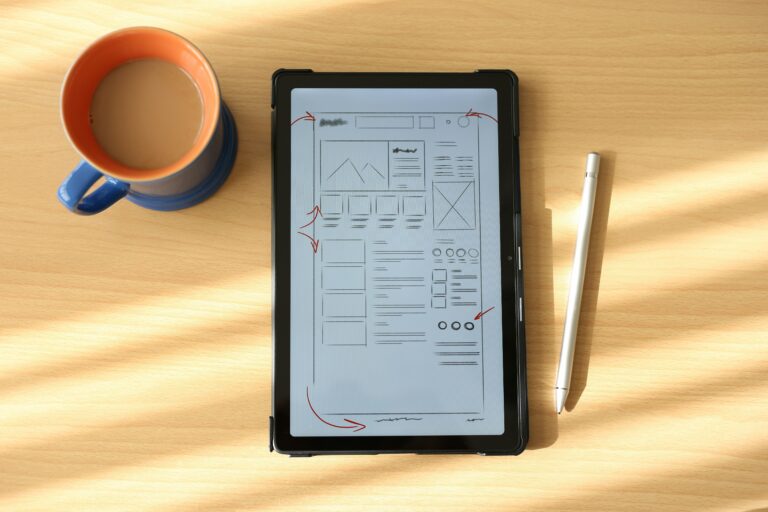Marketing Director
27 Dec, 2023
- In today’s dynamic business landscape, the role of a Chief Product Officer (CPO) holds paramount importance. Whether you’re a senior executive looking to hire a CPO or a CPO aiming to enhance your leadership skills, this blog explores Chief Product Officer leadership styles and their benefits.
Understanding the Chief Product Officer role
Defining the CPO role
A Chief Product Officer (CPO) holds a pivotal position responsible for overseeing the entire product lifecycle, from conception to delivery. This role involves product strategy, development, and management. For more information about a Chief Product Officer, including roles and responsibilities, salary guides, Chief Product Officer job description example and more, read our dedicated Chief Product Officer page.
Unique challenges faced by CPOs
The journey of a CPO is not without its challenges. With an average tenure of just 24 to 30 months, CPOs must navigate complex terrain:
- Balancing technical expertise and strategic thinking: CPOs need both technical expertise in product development and strategic thinking to align products with business objectives.
- Managing high-stakes decision-making: CPOs often make pivotal decisions that significantly impact a company’s success, leading to immense pressure and scrutiny.
- Navigating rapid technological advancements: Technology evolves swiftly, and CPOs must stay ahead of the curve to ensure their products remain competitive.
- Alignment with other departments: Ensuring alignment between product development, marketing, sales, and other departments can be challenging but is essential for success.
- Market volatility: Rapid market changes can require quick pivots in product strategies, demanding adaptability and agility.
The evolving landscape of Chief Product Officer leadership
Historical perspective
The role of a CPO has significantly evolved over the years, transitioning from a primarily technical role to a strategic one:
- Technical focus: Initially, CPOs primarily handled product development and engineering.
- Strategic expansion: Over time, CPOs recognised the need to align product strategies with overall business objectives, shifting from a purely technical focus.
- Customer-centricity emergence: CPOs started prioritising customer-centricity, understanding that meeting customer needs was central to success.
- Data-driven decision-making: With the advent of big data and analytics, CPOs began leveraging data to drive product decisions and measure success.
Current trends and shifts
Today’s CPOs must stay attuned to the latest trends:
- Hyper-customer-centricity: Companies focus on understanding customer needs deeply and delivering tailored solutions.
- Agile methodologies: Agile product development approaches like Scrum and Kanban gain prominence due to their flexibility.
- Data-driven everything: Data is at the heart of modern product development, influencing decisions from feature prioritisation to user experience design.
- Cross-functional collaboration: Collaborative cultures breaking down silos between departments enhance innovation.
- Sustainability and ethical concerns: CPOs consider environmental and ethical impact as part of their strategies.
- Remote work and global teams: Managing geographically dispersed product teams requires new leadership skills.
Chief Product Officer leadership styles
This blog highlights various Chief Product Officer leadership styles, their key attributes, the benefits they bring but also notes common challenges experienced by CPO’s.
Let’s take a brief look into each leadership style:
1. Visionary leadership
Leadership style: Visionary leadership involves crafting a clear, inspiring product vision and communicating it effectively to the team.
Key attributes: Visionary leaders excel at crafting a compelling product vision that aligns with organisational goals. They inspire and motivate teams, fostering purpose and direction. Visionary leaders encourage innovation and creativity.
Benefits and outcomes:
- Fosters a sense of purpose and direction.
- Drives long-term product strategy.
- Attracts top talent inspired by the vision.
Challenges:
- Overwhelming expectations.
- Resistance to change.
2. Strategic leadership
Leadership style: Strategic leadership focuses on developing and executing a well-defined product strategy aligning with broader objectives.
Key attributes: Strategic leaders set clear product goals, identify opportunities, and make data-driven decisions.
Benefits and outcomes:
- Ensures alignment with company objectives.
- Maximises resource allocation.
- Positions for sustainable growth.
Challenges:
- Balancing short-term and long-term objectives.
- Resisting micromanagement.
3. Collaborative leadership
Leadership style: Collaborative leadership emphasises teamwork and cross-functional collaboration.
Key attributes: Collaborative leaders build strong relationships, foster inclusivity, and encourage diverse perspectives.
Benefits and outcomes:
- Enhances creativity and innovation.
- Accelerates decision-making.
- Improves team morale and productivity.
Challenges:
- Managing diverse perspectives.
- Ensuring accountability.
4. Adaptive leadership
Leadership style: Adaptive leadership involves navigating change, uncertainty, and market shifts.
Key attributes: Adaptive leaders pivot product strategies when needed, handle obstacles with resilience, and maintain team motivation.
Benefits and outcomes:
- Positions for success in rapidly changing markets.
- Builds a culture of resilience.
- Mitigates risks associated with market volatility.
Challenges:
- Embracing uncertainty.
- Managing change fatigue.
5. Customer-centric leadership
Leadership style: Customer-centric leadership prioritises understanding and addressing customer needs.
Key attributes: Customer-centric leaders analyse customer data, integrate feedback, and prioritise satisfaction and loyalty.
Benefits and outcomes:
- Higher customer satisfaction and loyalty.
- Increased product adoption and revenue.
- Improved product-market fit.
Challenges:
- Balancing customer demands.
- Meeting diverse customer needs.
6. Data-driven leadership
Leadership style: Data-driven leadership relies on leveraging data and analytics.
Key attributes: Data-driven leaders define relevant KPIs, analyse data regularly, and make data-backed decisions.
Benefits and outcomes:
- Informed decision-making.
- Improved product quality and efficiency.
- Greater competitiveness in the market.
Challenges:
- Dealing with data overload.
- Avoiding overreliance on data.
Case Studies: effective Chief Product Officer leadership
Spotify’s Gustav Söderström
Gustav Söderström, the CPO at Spotify, embodies visionary leadership. He drove Spotify’s product innovation by introducing features such as personalised playlists and expanding into podcasts. His visionary approach inspired his team to push boundaries and continually enhance the user experience, propelling Spotify to its position as a music streaming giant.
Slack’s Tamar Yehoshua
Tamar Yehoshua, the CPO at Slack, exemplifies collaborative leadership. She leads cross-functional collaboration between product, engineering, and design teams, fostering an environment of innovation and teamwork. Her collaborative leadership style played a pivotal role in making Slack an indispensable tool for remote and in-office teams alike.
These case studies illustrate how leadership styles translate into tangible outcomes, driving innovation, and fostering success within their respective organisations.
Chief Product Officer leadership style: challenges
Common mistakes:
- Resistance to change.
- Neglecting data insights.
- Losing customer focus.
- Lack of cross-functional alignment.
- Inflexibility.
- Overlooking ethical considerations.
- Underestimating global dynamics.
Strategies to overcome challenges:
- Promote change management.
- Prioritise data insights.
- Stay customer-centric.
- Foster cross-functional collaboration.
- Embrace adaptability.
- Embed ethics in strategy.
- Think globally.
Developing your own Chief Product Officer leadership style
Self-assessment and reflection:
- Seek feedback and reflect on past experiences for improvement.
- Create your own personal development plan.
Seek mentorship and guidance:
- Learn from seasoned CPOs or executive coaches.
- Gain free mentorship from our Partner Up Product Mentorship scheme, or join as a mentor yourself.
Continuous learning and improvement:
- Stay updated with the latest trends and invest in skill development.
- Invest time in Product Management training courses
- Invest time in specific Leadership courses
Summary
In the realm of Chief Product Officer leadership, the potential for impact is immense. Embracing visionary, strategic, collaborative, adaptive, customer-centric, and data-driven Chief Product Officer leadership styles empowers CPOs to navigate the ever-changing tech landscape and steer their teams toward excellence.
Are you a candidate looking for your next CPO role? Upload your CV.
Are you an employer looking to hire a CPO for your business? Contact us today.
If you are a CPO looking to transition to the next step in your career as a CEO, make sure you check out our Roundtable discussion.




